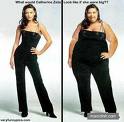![]() Receive new posting via RSS feed. >Click the icon on the left to subscribe.
Receive new posting via RSS feed. >Click the icon on the left to subscribe.
(Or right click the icon to copy and paste the link into your rss reader)
Turn-off Tactics: More New Insights
A Special Issue of Journal of Consumer Research (V35, No. 3, 2008) contains many new insights into turn-off tactics. Here’s my ‘Readers Digest’ version of those findings:
We avoid ‘extremes'. (p406)
The well known compromise effect says that people tend to avoid extremes and opt for in-between choice(s). This applies not only to rating scales but also portion sizes and it provides important insight into why drink portion sizes have increased over time. Corporations found that if they eliminate the smaller sizes and add a larger size, they can increase overall drink consumption. (People who prefer a 12oz drink will purchase a larger size if the 12 oz is not available.) It is a powerful argument for encouraging reintroduction of smaller sizes. (But see last item below.)
 How to encourage hotel guests to re-use their towels. (p472)
How to encourage hotel guests to re-use their towels. (p472)
The familiar appeal to guests to help protect the environment by re-using their towels, definitely works. But it works even better when you also employ the bandwaggon effect i.e. informing them that “The majority of guests in this room reuse their towels.”
The first message makes salient the guest’s identity as an environmentalist and the second communicates the social norm (lets them know that they are in the majority). The result? Cooperation by guests increases by about 33% when both messages are employed.
Identity based interventions. P509
 Ads for anti smoking/speeding/drinking etc that point out the risks, don’t always work. Despite knowing the health consequences, people may continue to engage in the risky behavior. Especially if celebrities and‘cool people’ are seen doing it, it signals desired identity. P516. But a) contaminate the social identity by for example making smoking ‘uncool’ or b) make a negative stereotype salient, and you can modify behavior and improve public health.
Ads for anti smoking/speeding/drinking etc that point out the risks, don’t always work. Despite knowing the health consequences, people may continue to engage in the risky behavior. Especially if celebrities and‘cool people’ are seen doing it, it signals desired identity. P516. But a) contaminate the social identity by for example making smoking ‘uncool’ or b) make a negative stereotype salient, and you can modify behavior and improve public health.
 How Smaller-Packs Can Backfire With Dieters.
How Smaller-Packs Can Backfire With Dieters.
People generally consume more when the pack sizes are larger so smaller pack sizes help (see earlier). However, this effect seems to backfire for dieters. When people are already diet conscious (restrained eaters) the introduction of small serve packs can result in these people consuming more over time. When the pack size is larger, they seem more inclined to resist temptation.
This is not a trivial finding because the number of people who are on a diet at any time is about 25%! (And even more say they generally try to control their food and drink consumption). If confirmed, this finding poses a real complication and a vexing challenge for the deployment of smaller-pack size strategies to fight obesity. P380, P391For more on turn-off tactics... click here.


